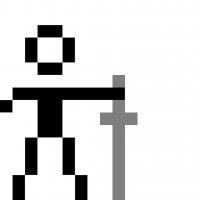Hi all
this is my first post on this forum.
First of all i want to say you that i've searched many posts on this forum about this specific argument, without success, so i write another one....
Im a beginner.
I want use GPU geometry clipmaps algorithm to visualize virtual inifinte terrains.
I already tried to use vertex texture fetch with a single sampler2D with success.
Readed many papers about the argument and all speak about the fact that EVERY level of a geometry clipmap, has its own texture. What means this exactly? i have to
upload on graphic card a sampler2DArray?
With a single sampler2D is conceptually simple. Creating a vbo and ibo on cpu (the vbo contains only the positions on X-Z plane, not the heights)
and upload on GPU the texture containing the elevations. In vertex shader i sample, for every vertex, the relative height to te uv coordinate.
But i can't imagine how can i reproduce various 2d footprint for every level of the clipmap. The only way i can imagine is follow:
Upload the finer texture on GPU (entire heightmap). Create on CPU, and for each level of clipmap, the 2D footprints of entire clipmap.
So in CPU i create all clipmap levels in terms of X-Z plane. In vertex shader sampling these values is simple using vertex texture fetch.
So, how can i to sample a sampler2DArray in vertex shader, instead of upload a sampler2D of entire clipmap?
Sorry for my VERY bad english, i hope i have been clear.







